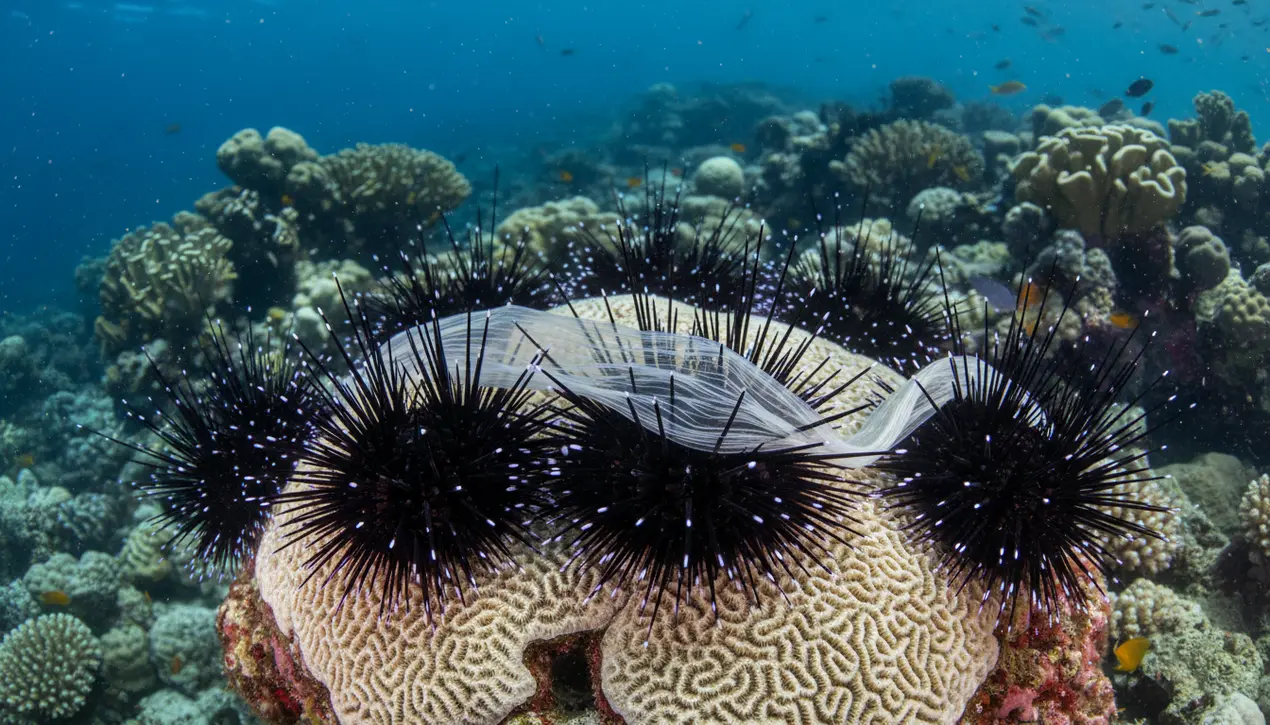
Scienceneuroscience
Sea Urchins Described as Spiky Walking Brains
TH
Thomas Green
7 hours ago7 min read1 comments
If you've ever marvelled at the alien architecture of a sea urchin, that pincushion of the deep, and pondered the location of its command centre, prepare for a revelation that redefines our understanding of neural networks. According to groundbreaking research, you aren't just looking at a creature with a brain; you are looking at a creature that *is* a brain.From the very tips of its formidable, spikey spines down to its gelatinous core, the entire sea urchin body appears to function as a single, distributed neural system. This isn't merely an anatomical curiosity; it's a paradigm shift in biology, suggesting that intelligence and sensory processing can be achieved without a centralised processing unit, a concept that would make any computer engineer's head spin.Imagine a supercomputer where every component, from the power supply to the cooling fans, also processes information—that's the evolutionary masterpiece we're witnessing on the ocean floor. This discovery, emerging from the field of comparative neurobiology, forces us to expand our very definition of a 'brain.' For too long, we've been terrestrially biased, viewing centralised brains like our own as the pinnacle of cognitive evolution. But the sea urchin presents a radically different, and profoundly successful, blueprint for existence.Its body is a living sensorium, with its spines acting not just as defensive armour but as intricate sensory organs, detecting light, touch, and chemicals, relaying information through a diffuse nerve net that permeates its entire structure. This decentralized intelligence offers incredible robustness; damage that would be catastrophic for a centralized brain is merely a localized setback for the urchin.This biological design philosophy echoes the most resilient networks we strive to create, from the distributed ledger of blockchain to the fault-tolerant architecture of the internet itself. The implications ripple far beyond marine biology, offering tantalizing clues for fields like robotics and artificial intelligence.How do we engineer machines that can adapt and sense their environment not from a single, vulnerable CPU, but from their entire physical form? The sea urchin, a creature that has navigated the planet's oceans for over 450 million years, holds the key. It challenges the hubristic notion that complex behaviour requires a complex brain in the way we conceive it.Its coordinated movement, its feeding strategies, its response to predators—all are managed by this embodied intelligence. As we peer deeper into the cosmos for signs of life, the sea urchin reminds us that alien intelligence might not be housed in a familiar skull but could be an intrinsic property of an entire organism, a spiky, walking brain that has been solving the puzzles of survival since long before our own species took its first breath.
#featured
#sea urchins
#neuroscience
#animal biology
#research
#marine life
#brain evolution
Stay Informed. Act Smarter.
Get weekly highlights, major headlines, and expert insights — then put your knowledge to work in our live prediction markets.
Related News
Comments
Loading comments...
© 2025 Outpoll Service LTD. All rights reserved.